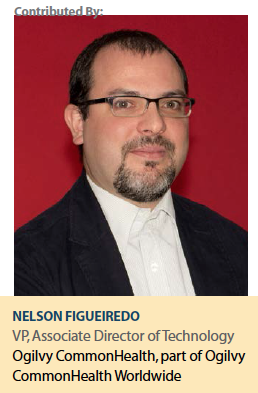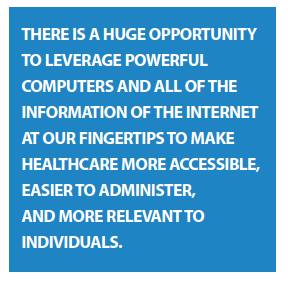 There are few marketers or brands left that have not heard the call of mobile in their communication plans. For many audiences, mobile devices are not just preferred, but may be the only privately owned devices for using the Internet. For healthcare brands in particular, this has meant a sharpening focus on how mobile platforms fit into both patient and professional journeys.
There are few marketers or brands left that have not heard the call of mobile in their communication plans. For many audiences, mobile devices are not just preferred, but may be the only privately owned devices for using the Internet. For healthcare brands in particular, this has meant a sharpening focus on how mobile platforms fit into both patient and professional journeys.
Mobile strategies are not app strategies
When Apple announced that it would be launching the AppStore for the iPhone in 2008, it was a “gold rush" for a new generation of developers. Shortly after, many brands began to create apps to provide their customers with services. Today, very few of the 1.6 million apps available in the app store are downloaded by a mass audience. Fewer still are used with any frequency by end users.
Few brands have a strong enough value proposition — or resonance — to provide their users with something that will drive regular engagement with a mobile app. It is more powerful for a brand to work towards delivering compelling experiences that are optimized for mobile users, and that provide the right information in the correct context when it is needed.
What makes a compelling mobile experience?
Brands need to plan for a much more sophisticated approach to addressing mobile users’ needs and potential actions. They can do this by addressing the “full stack" of mobile capabilities. These capabilities include wireless networks, user behavior, software, and the phones themselves:
Search: By making sure that you are adhering to Google’s and Bing’s search practices, you will help increase your search score and ranking position with search engines. Paid search campaigns should be targeting device types, terms, and time of day (information searched mid-day vs evenings may change drastically)
 Speed: Are images, files, and resources optimized for smaller screens? Despite having a mobile-friendly website, do materials available for download such as PDFs or audio files work well on small screens or from slower wireless connections?
Speed: Are images, files, and resources optimized for smaller screens? Despite having a mobile-friendly website, do materials available for download such as PDFs or audio files work well on small screens or from slower wireless connections?
Call to action: Mobile provides a unique opportunity to make addresses and phone numbers clickable lessening the steps required to activate a user. Make sure to have actionable items formatted so that they are machine recognizable and clickable on mobile devices.
Text Messaging: Although text messaging is much older than the smartphones that now carry messaging for users, it is still a big part of phone use in the United States. Through text opt-in programs to the use of automated reminders, text messaging is a reliable path to engaging both patients and professionals.
Geo-Location: Mobile devices can report location and provide context to information such as proximity to a physician, pharmacy, facility, insurance or access information, or a support community. Use this function to make connections and lessen the steps to action.
Media: Many mobile devices offer superior media capabilities from audio and video playback to capturing information. Take advantage of being able to show or demonstrate a condition or solution. In some instances, patients may be able to record aspects of their condition for their own reference or sharing with a physician.
Social Media: Facebook is ubiquitous and installed on more than 75% of smartphones today. YouTube is on over 63% of smartphones. These are excellent ways to address customer service or activate brand advocates.
Virtual/Augmented Reality: With advancements in processing power and screen quality, both virtual and augmented reality can move communication from a text-based call to action or phone call to a virtual physician visit or AR tool that overlays anatomical information provided by your doctor or manufacturer remotely.
Opportunities Abound
As the devices we carry with us every day advance, so should our approach as marketers and communicators. There is a huge opportunity to leverage powerful computers and all of the information of the Internet at our fingertips to make healthcare more accessible, easier to administer, and more relevant to individuals. This is our charter as we move into a healthier and more mobile and connected tomorrow. (PV)
Ogilvy CommonHealth Worldwide — the health behavior specialists of Ogilvy & Mather — is committed to creativity and effectiveness in healthcare communications, everywhere.
For more information, visit ogilvychww.com











